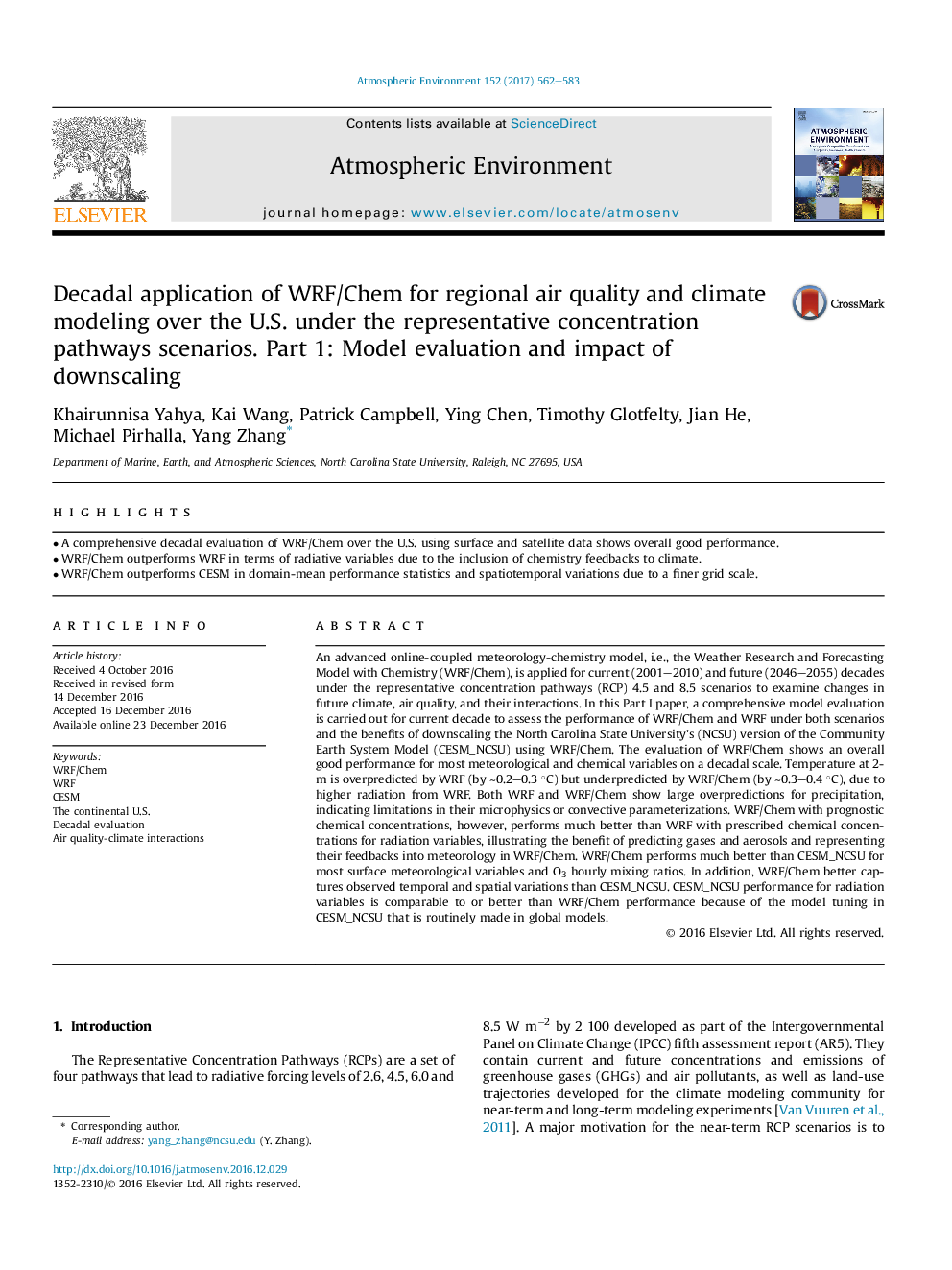| کد مقاله | کد نشریه | سال انتشار | مقاله انگلیسی | نسخه تمام متن |
|---|---|---|---|---|
| 5753427 | 1620322 | 2017 | 22 صفحه PDF | دانلود رایگان |

- A comprehensive decadal evaluation of WRF/Chem over the U.S. using surface and satellite data shows overall good performance.
- WRF/Chem outperforms WRF in terms of radiative variables due to the inclusion of chemistry feedbacks to climate.
- WRF/Chem outperforms CESM in domain-mean performance statistics and spatiotemporal variations due to a finer grid scale.
An advanced online-coupled meteorology-chemistry model, i.e., the Weather Research and Forecasting Model with Chemistry (WRF/Chem), is applied for current (2001-2010) and future (2046-2055) decades under the representative concentration pathways (RCP) 4.5 and 8.5 scenarios to examine changes in future climate, air quality, and their interactions. In this Part I paper, a comprehensive model evaluation is carried out for current decade to assess the performance of WRF/Chem and WRF under both scenarios and the benefits of downscaling the North Carolina State University's (NCSU) version of the Community Earth System Model (CESM_NCSU) using WRF/Chem. The evaluation of WRF/Chem shows an overall good performance for most meteorological and chemical variables on a decadal scale. Temperature at 2-m is overpredicted by WRF (by â¼0.2-0.3 °C) but underpredicted by WRF/Chem (by â¼0.3-0.4 °C), due to higher radiation from WRF. Both WRF and WRF/Chem show large overpredictions for precipitation, indicating limitations in their microphysics or convective parameterizations. WRF/Chem with prognostic chemical concentrations, however, performs much better than WRF with prescribed chemical concentrations for radiation variables, illustrating the benefit of predicting gases and aerosols and representing their feedbacks into meteorology in WRF/Chem. WRF/Chem performs much better than CESM_NCSU for most surface meteorological variables and O3 hourly mixing ratios. In addition, WRF/Chem better captures observed temporal and spatial variations than CESM_NCSU. CESM_NCSU performance for radiation variables is comparable to or better than WRF/Chem performance because of the model tuning in CESM_NCSU that is routinely made in global models.
Journal: Atmospheric Environment - Volume 152, March 2017, Pages 562-583